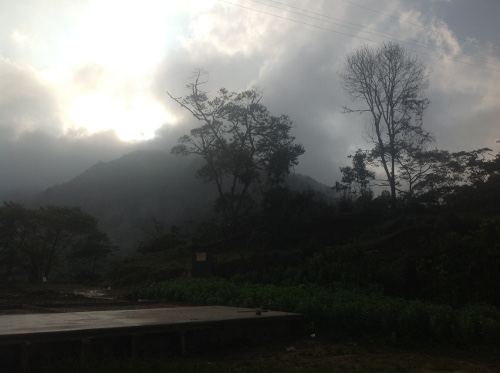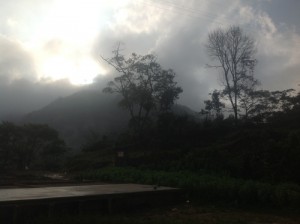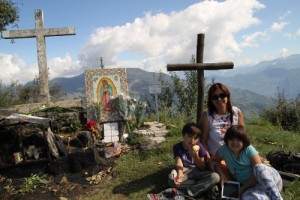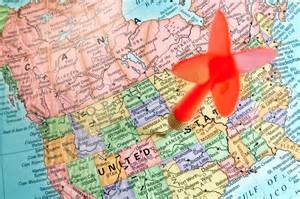Having been born and raised in East Los Angeles I had very little opportunity to experience nature. Growing up, my one and very limited interaction with nature was on my daily walk to school. My path from our apartment complex to school was a sidewalk lined with jacaranda trees with their purple flowers. Everyday I would pop the purple flowers under my sneakers in order to awaken my senses. Needless to say, while growing up nature was an entirely abstract concept. Where I lived there was no such thing as camping or girl scouts. The one thing that was available, the annual 4th grade overnight camping trip where they take poor inner city kids to nature, was forbidden by my mom.
After our journey to Huautla de Jimenez I realized that I could no longer live without nature in my life. I had gone through my entire life devoid of nature and now avoiding nature was no longer an option. Like a plant that needs air, water, sun and earth my soul also needs the same air, water, sun and earth in order to thrive. My soul was slowly dying in the fast lane of the 10 Fwy commuting two hours a day to driving our kids to the westside for a better school than the ones the eastside of Los Angeles had to offer. And after that daily commute I would spend the next nine hours of my day at work. I was physically exhausted and my soul was drained of all its strength.
The trip to Huautla de Jimenez really crystallized all the things I was lacking. My life was lacking serenity, peace, balance, which had been replaced by deadlines, appointments and long drives in the Los Angeles wilderness to nothingness.
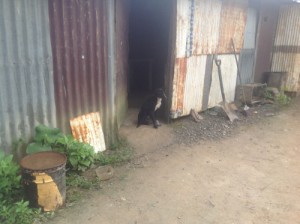
When we met the Chota Chjine (Wise Woman) that was to do our ceremony, she had such a beauty, light and peace emulating from her. It was as if she held a giant secret to universal happiness and contentment. Her family and her live in what the western world and even modern Mexico of today would consider humble and primitive surroundings. The kitchen I adored instantly, as it had instantly reminded me of my great Aunt’s house (my Tia Josephina lived in a small pueblo in the Sonoran desert). I felt right at home on the earthen floor and the pit fire wood stove where coffee brewed all day long. The old lady who looked to be ninety, with braids that almost reached the earthen floor took care of the fire all day long. You could find her in the kitchen day and night tending the fire or mixing the nixtamal. As humble as the surroundings were, there was such a richness and bounty in the Chota Chjine’s daily life. She walked in the beauty of her surroundings and the nature that surrounded her and I was amazed by their ability to live in nature. She not only was the elder Chota Chjine, or the wise woman of her area. She ran the local indigenous hospital outside her house as well as the indigenous church perched on top of the hill. She combined both the medicinal and spiritual properties of the plants around her and used the confluence of both worlds to complement each other in order to heal. As Santeras we do this as well, as we use sacred plants and the Orichas to aide us in our struggles.
Yet at that moment I realized that I hadn’t truly walked in nature, that in order to truly understand medicine, healing and spirituality that I need to immerse myself in Nature. Nature that abounds and teaches us… if we are listening.
When Nature talks…
In the concrete jungle of Los Angeles, I had daily interactions with animals, mostly the winged variety who would forewarn me of my day ahead. My Egguns and I developed a system of communication that can warn me of danger ahead, when to be cautious or to alert me to good news coming my way. Each bird or insect had their own separate message. I might blog about this later but a quick reference was that for me hummingbirds brought good news, insects foretold of quarrels, ducks brought stability or a need for stability in the home and birds of prey brought more complicated messages and warnings from the spiritual realm. Even in Los Angeles I was able to develop a system of communication with my egguns and the spiritual world that abounds. But I had yet to walk in nature and listen to when the mountain speaks.
At Nindo Tocoxo, the sacred mountain of the Mazateco Indians and the spiritual power of their ancestors, we went to give our offerings and prayers prior to our ceremony. Nindo Tecoxo is an monumental mountain of over 2000 meters that is a surprisingly easy walk. The route starts on the trail near Maria Sabina’s house that now houses a tiny museum to her life and legend as the world’s most famous Shaman. At the top of the mountain we saluted the four corners and did our prayers and offerings with our guide, who was a curandera in her own right who would be bringing us to the Chota Chjine for the evenings ceremony. After our prayers we each walked with our guide and stopped for a moment at the spiritual apex of the mountain. In that moment, with an open heart I whispered my prayers to Chikon Tocoxo, the deity who ruled over the Mazatecs who lived there at the top of the mountain. As I finished my guide said, “Did you hear that?†“Yes, I did.†The sound of a strong waterfall gushing down the mountain top was clear, even though there was no water in sight or any waterfalls within miles. My guide pronounced “Chikon Tocoxo is very happy with you. He has accepted your offerings and prayers. You are fortunate and I rarely have this happenâ€.
Nature speaks to us, validates our experience and encourages us when we are on the right path.
The purpose of this journey and extended travel is to experience and learn from Nature. The Orichas are elements of nature, they live in Nature and so, in order to deepen my understanding of the Orichas, I need to deepen my understanding of nature.

